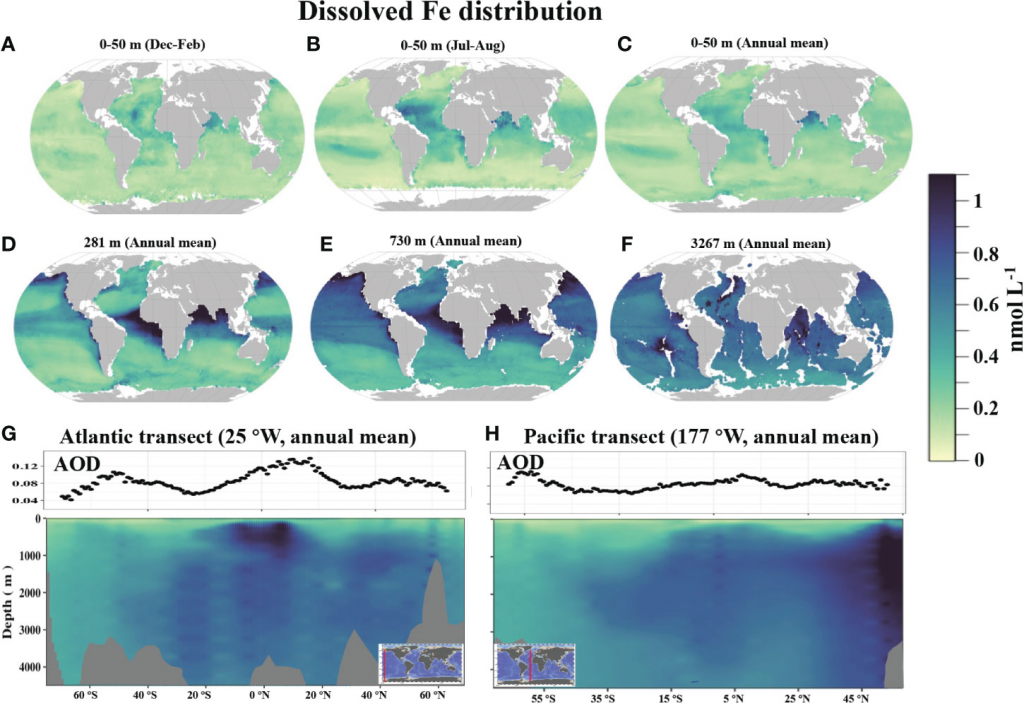The importance of dissolved Fe (dFe) in regulating ocean primary production and the carbon cycle is well established. However, the large-scale distribution and temporal dynamics of dFe remain poorly constrained in part due to incomplete observational coverage. In this study, we use a compilation of published dFe observations (n=32,344) with paired environmental predictors from contemporaneous satellite observations and reanalysis products to build a data-driven surface-to-seafloor dFe climatology with 1°×1° resolution using three machine-learning approaches (random forest, supper vector machine and artificial neural network). Among the three approaches, random forest achieves the highest accuracy with overall R2 and root mean standard error of 0.8 and 0.3 nmol L-1, respectively. Using this data-driven climatology, we explore the possible mechanisms governing the dFe distribution at various depth horizons using statistical metrics such as Pearson correlation coefficients and the rank of predictors importance in the model construction. Our results are consistent with the critical role of aeolian iron supply in enriching surface dFe in the low latitude regions and suggest a far-reaching impact of this source at depth. Away from the surface layer, the strong correlation between dFe and apparent oxygen utilization implies that a combination of regeneration, scavenging and large-scale ocean circulation are controlling the interior distribution of dFe, with hydrothermal inputs important in some regions. Finally, our data-driven dFe climatology can be used as an alternative reference to evaluate the performance of ocean biogeochemical models. Overall, the new global scale climatology of dFe achieved in our study is an important step toward improved representation of dFe in the contemporary ocean and may also be used to guide future sampling strategies.

See our paper for more info:
Huang, Y. Tagliabue, A., Cassar, N. 2022. Data-driven modeling of dissolved iron in the global ocean. Frontiers in Marine Science, https://doi.org/10.3389/fmars.2022.837183.


You must be logged in to post a comment.